-
Posts
66 -
Joined
-
Last visited
Content Type
Profiles
Forums
Events
Store
Gallery
Posts posted by SlamDunk
-
-
I've been running it for three seasons - so far I like it
-
-
-
You are starting to think along the right lines.
Sometimes conditions are set up where they are hugging the bottom, or there is a pack of water blown in toward shore or current upwelling on some reef to keep them in a certain depth of water. That being said, in general salmon are open water feeders and mostly they do not know or care how deep the water is beneath them.
So many anglers get caught up in trying to keep on a line in 100 feet of water, 200 ft, 300 ft, whatever that "magical depth" may be. Again, do the fish really care how deep the water is? There are too many other factors that determine where they are going to be located and what presentations they are going to bite on.
-
You can catch them as deep as you want but you have to have the right conditions on the right day just like conditions need to be right to catch them at the pierhead.
Bottom line is don't expect to "save the day" by dropping lines down 200 to 400 ft.
-
Does the pickled asparagus come with it? Kidding aside, analog units like this have terrific sensitivity. My 1987 Furuno is still functioning well, and can pick up very small targets. Don't be afraid of the age on this one.
ditto - I also have an older Furuno and its bullet proof
-
Meat is good anytime. As always it depends on the where you run it, what presentation your using, color, speed, large vs small blades and meat heads, etc, etc.
However for me personally I typically only run it mid-day and usually only on one rig. It is just too much hassel for me to care to run any more than that. I suppose if I was struggling and it was the only thing I could buy a bite on then I would load up with it.
-
Grew up on Superior and later started fishing Lake Michigan so I've logged hundreds of days on both of those lakes.
I've got Erie, Huron, and Ontario on the list yet to hit at least once.... Might get out to Ontario this spring. Its just hard to sneak away when busy on lk mich.
-
I think you are referring to sliders, not slide divers.
Although I suppose you could drop a slide diver in before attaching to the ball to get some added depth... but that sounds like a Pain in the ....
-
With the limited equipment you have, I might suggest a shorter segment of leadcore or copper. Then, get yourself a couple different sizes of torpedo divers or snap weights to allow you to clip on and get added depth when you need to. With limited setups its important to make each setup as versatile as you can, IMHO
-
Some 2013 memories/fish porn:

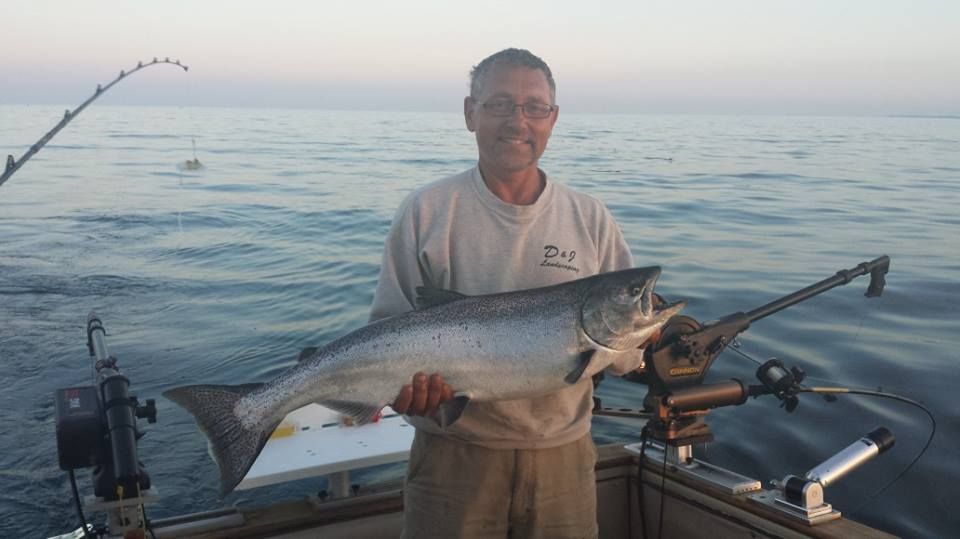
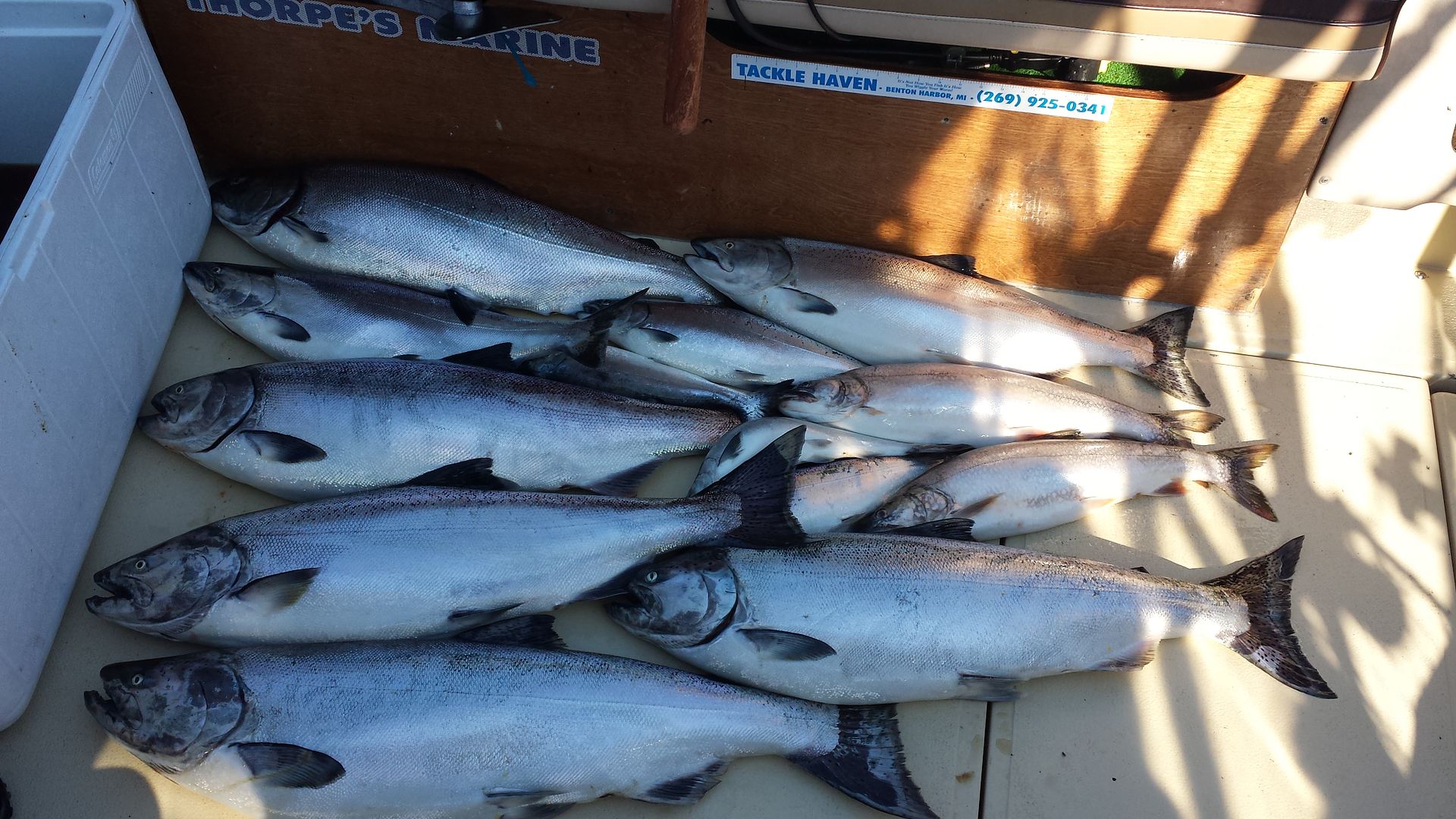
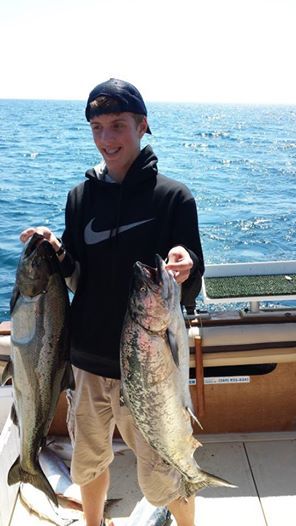
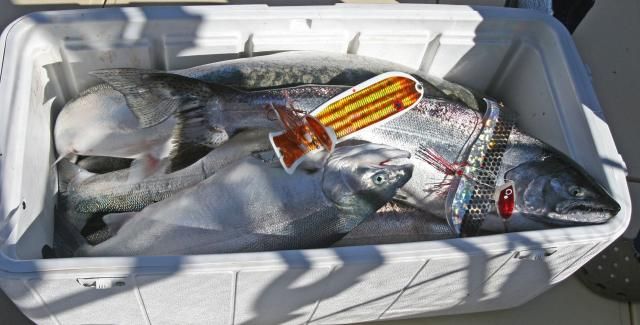

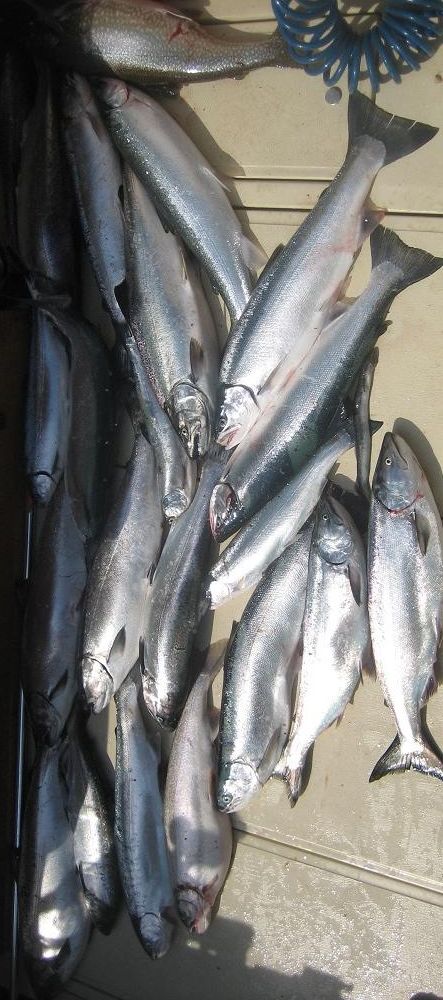

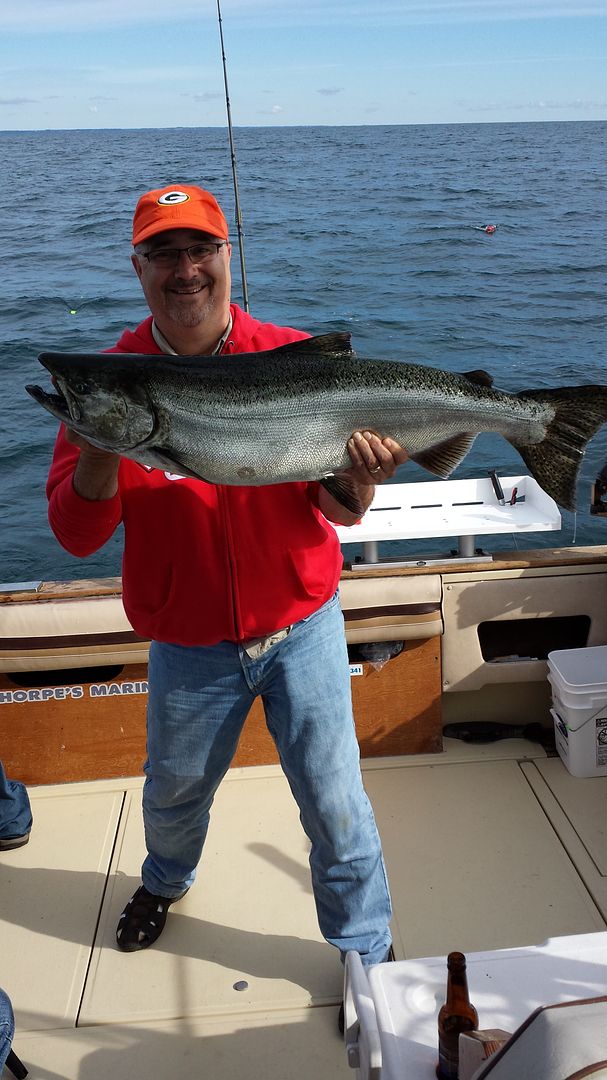
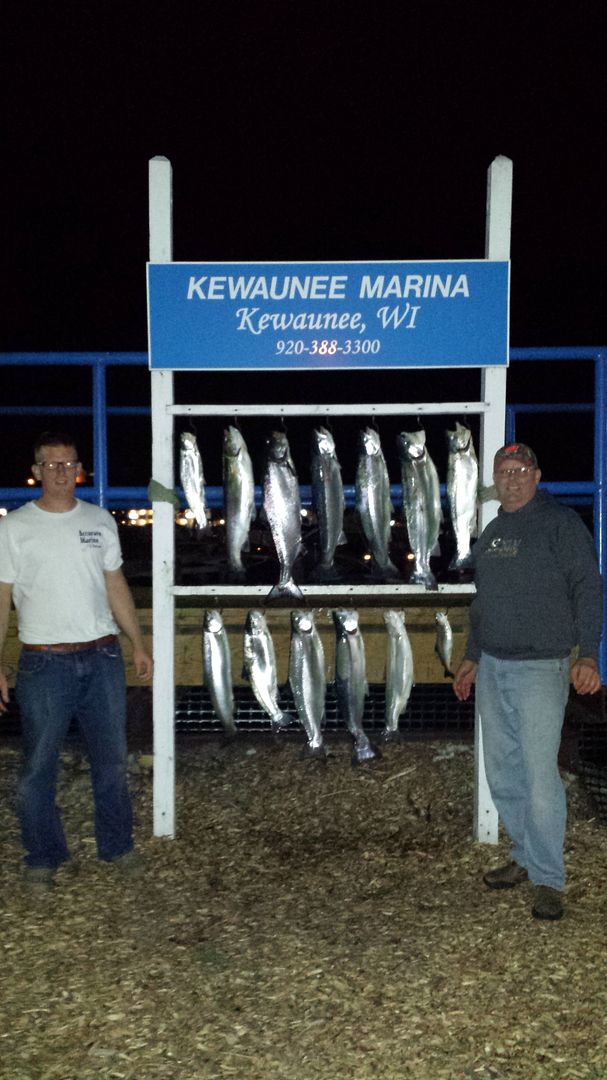
Child's Wish Outing
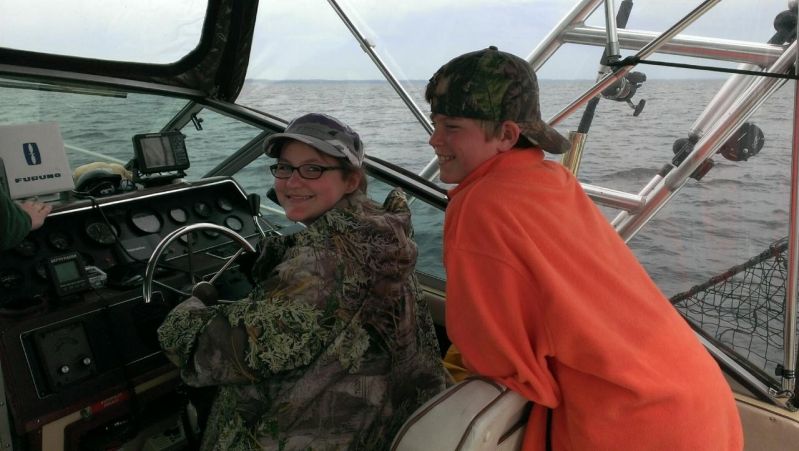
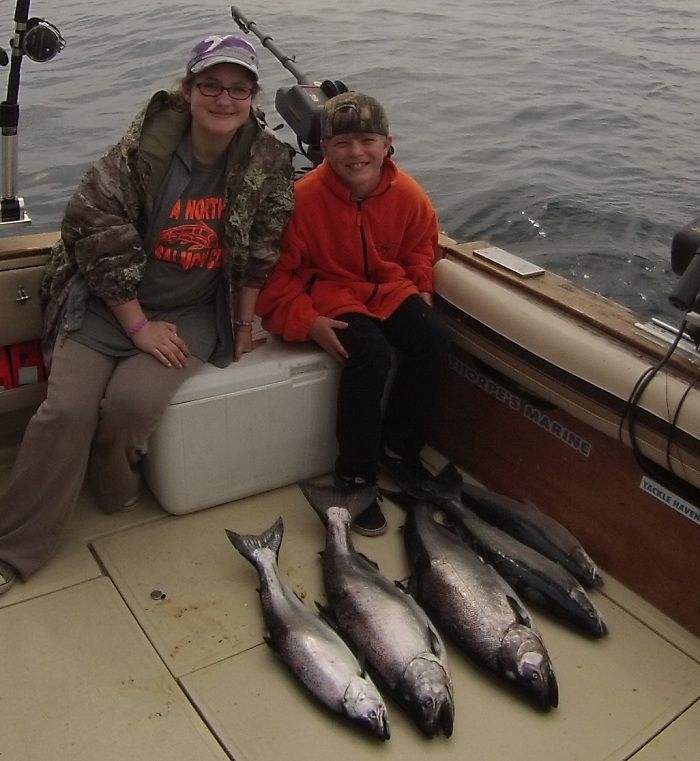
Tried out the new GoPro camera as well:
-
Thanks for all the input here. Looks like, after reading here... I need to get some copper in my spread. A few questions on the copper: Do I set them out first on boards, or wait until riggers, dipsy's are out then go over the top? Is it best to have a roller rod for copper? What size rod? When setting out multiple boards per side, how far between boards and how close is your closest board to the boat? Knots for backing... double uniknot? Thanks Tim
One of the best ways to shorten the learning curve on all of this is to get out with other guys who have the experience. I'm sure there are guys on this site that would be willing to share a seat for a day. Another option, several charter captains including myself offer on-the-water classes and they will cover anything you want to know, including everything from how to rig up copper lines, to suggestions on how to best set up your new boat for trolling, and anything else in between. My biased opinion of course, but very worth the investment to shorten that learning curve and help avoid a lot of learning "mistakes" along the way.
For copper its best to have a fairly sturdy rod, this allows your planer board to run better. Personally I like the Okuma GLT Copper/Leadcore Rods 8'6". The nice wide stainless guides are great for sliding those knots thru.
Everyone has their preference for backing/knots/etc. I set mine up with 300 yards of 50# powerpro, then I use a double-uni knot to about a 6 foot piece of 50# mono (this is to clip the planer board to), then I tie the mono to a small (I think #8) spro two way swivel, and tie the copper to the other end of that swivel. I do the same thing on the leader-end, with a swivel between the copper and mono or flouro leader.
You'll get a feel for distance between boards as you go. You'll want your inside board far enough out to avoid tangling with your outermost dipsy when a fish hits the dipsy and comes up toward the surface.... again, you'll get the hang of judging that distance with some practice.
-
Bought some new downriggers this past summer and ended up with an extra Cannon Mag10 STX
Brand new still in the original box
$485 or best offer
-
KJ, I have heard the "bank" mentioned a few times in regards to Sturgeon Bay. Any details on this?
Bank reef, basically the easiest fishing on this side of the lake... that is if you can put up with the traffic, and the run thru the channel at sturgeon bay.
Personally, I don't care how good the fishing is on the bank, you couldn't pay me enough to fish there. I'll take miles of open water any day over that. But that's just me

Bottom line - its a great piece of structure and holds a lot of fish. Get to know it as much as you can during off-peak times before heading out there on a Saturday morning to fish in the crowds. Hopefully some of the guys that fish there will chime in with more details around that. Good luck!

-
Die hards..... myself, I'll wait for warmer weather.....

-
I'm likely going to be putting some coastals on my boat. Most days I time it just right so that by the time I get out to the fishing grounds there is just enough sunlight that I can see everything without lights, so I'm not interested in spending a fortune on the top of the line lights. Coastals should do me just fine for the limited use I'll get out of them. Friends that have them really like them so I'd say you can buy with confidence.
-
In my experience that won't cause enough interference to be an issue...
-
here we go another slam dunk
Did someone say slam dunk????

Well sounds like you weren't the only one to go from hero to zero in one day. I'm sure fish will turn back on and you'll be back in the hero column on the next trip

-
My rule of thumb is just to let 200'+ coppers out in 150'+ depth of water. Safe everytime. Under 140' or so, no coppers. It's no fun dragging weed/zebras for hours with no hits. Deep gear/deep water, simple and true.
Certainly an error proof idea and way of avoiding trouble.

But personally I like to drag 300 copper in as shallow as 70 fow sometimes. Just let her out slow.

-
................................The way you can tell is by watching both your diver and your boards. for example if your boards are pulling harder on the right you need to turn left to get more into the current. when they are all pulling the same then you are straight into the current. I find the boards show me more surface current and my divers show me depth current better. same theroy with your diver rods. one will pull harder than the other. There are days the surfacce current is completely different than your depth current. when that happens i watch my diver rods to tell me where the current is coming from.
I will respectfully half-disagree.
Your lines don’t say much about down currents. We have to remember, unless there is ZERO surface current, wind, and tide, your boat is not going in a straight line. This goes back to old school chart plotting and the effect of set and drift on your trackline.
For example: If you are trolling perpendicular to the wind, with the wind hitting your starboard:
Your starboard side boards will appear further off to the starboard and your port side boards will appear to be almost straight behind the boat.
For dipsies, your starboard dipsy line will be pulling out away from the boat, while your port side dipsy line will look like its almost going underneath the boat.
Your downrigger cables will be angled toward the starboard.
This is not the result of your baits being carried by a subsurface current coming from your port side, it is simply the result of your boat sliding sideways (toward the port as it is pushed from the starboard by the wind or current) as it is going forward. Nor is it the result of your planer boards being carried by the surface current (which would actually have to be in the opposite direction of the wind if this were true). The effect is that the boat is pulling away from the starboard lines and being pushed toward the port side lines.
Yes, you can straighten things out by trolling directly with or against the surface current. But like you mentioned, sometimes down currents do not align with surface currents.
My point is, a lot of guys confuse surface current and wind for down current. Thinking about what your boat is doing, instead of focusiing only on what your lines "appear" to be doing is crucial. Its important to understand the difference and distinguish what’s happening on the surface versus what’s really going on down below.
-
Just got off the phone with an incredibly helpful gentlemen at Kell Outdoors, had to order a new antennae for my Depth Raider.
He mentioned they now offer the Klincher terminators with the stainless thru-bolt and stainless clip. Thought I would mention it for any guys who use this type of connection. I know I've always had a hell of a time drilling out the rivets, the plastic heats up, sometimes the rivets just spin, etc.

But then again, I'm not all that handy.
It sure would be a lot quicker to re-terminate if there was ever an "issue" while out on the water....

Also, A couple times a season I take about 10 ft of cable off and re-terminate just to be safe because the weakest point in that cable is always where all the flex is.
-
Chris - one of my guys had located some (ON SALE) a few weeks back... I'll see what details I can find out....
-
Torpedo 19 strand is an excellent product, you won't be disappointed after trying it.
-
Was going through some of the video I shot last season... why not share a quick clip...
Took some friends out on Memorial Day and my buddy "Pukey" was feeling a little seasick... He mustered up enough strength to reel in the last fish of the day and he was quite happy when it hit the net so we could head back to dry land.
http://s219.photobucket.com/albums/cc254/sgrose34/2012/?action=view¤t=Pukey.mp4


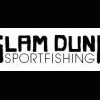







Torpedo 19 strand wire?
in Salmon Pro's Connection
Posted
All of the "problem" wire should be out of cirulation by now. It was 3-4 years ago and they corrected the problem right away.
Good luck - I know you will like it.